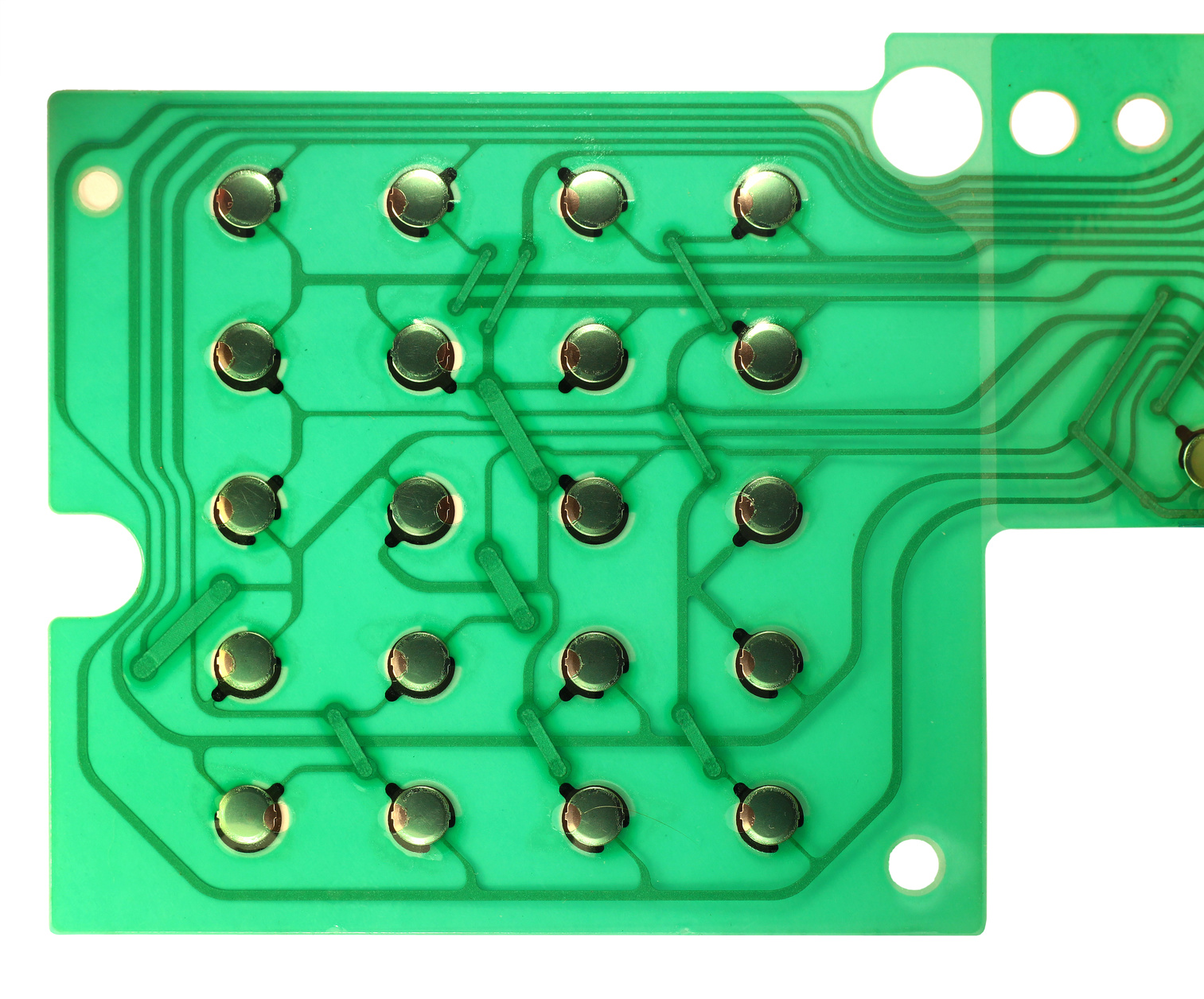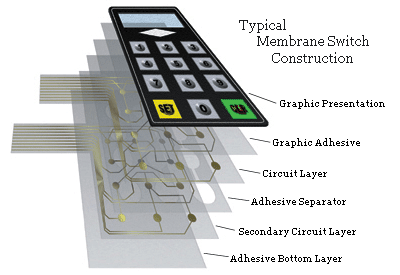Why Membrane Switches Are Preferred for Their Thin and Compact Designs
Why Membrane Switches Are Preferred for Their Thin and Compact Designs
Blog Article
Membrane Layer Switches Over Explained: A Comprehensive Guide to Their Benefits
Membrane layer switches stand for a versatile and innovative solution for developing individual interfaces across a range of fields. As sectors progressively look for reliable and efficient control interfaces, recognizing the details advantages and applications of membrane changes ends up being vital.
What Are Membrane Layer Switches?

When stress is put on the membrane button, the layers make call, completing an electric circuit. This basic device allows for a variety of applications, from customer electronics to industrial machinery. Membrane layer switches are commonly made to be immune and water-proof to dust and contaminants, making them ideal for environments where resilience is crucial.
Furthermore, the adaptability of the materials made use of in membrane switches helps with cutting-edge layouts that can comply with various shapes and measurements. This flexibility contributes to their appeal in diverse fields, consisting of clinical devices, automotive controls, and home devices. Generally, membrane changes stand for an essential component in modern-day interface technology, connecting the gap between individuals and digital systems.
Trick Advantages of Membrane Layer Switches
Amongst the myriad of individual interface choices available, membrane changes stick out for their one-of-a-kind mix of benefits. Among the primary benefits is their lightweight and small layout, which enables combination into a wide variety of tools without including considerable mass. This is especially advantageous in applications where room is restricted.
Additionally, membrane layer switches over offer longevity and resistance to environmental aspects. They are commonly built with products that can hold up against moisture, dust, and different chemicals, making them appropriate for rough conditions. This toughness adds to a much longer lifespan contrasted to typical mechanical buttons.
One more substantial advantage is the flexibility in customization. Membrane layer buttons can be printed with different graphics, colors, and textures, enabling customized styles that meet certain branding or useful demands. This versatility prolongs to the number of layers and circuit options, offering engineers with multiple configurations.
Moreover, the responsive feedback offered by some membrane layer switches over improves individual experience, making them much more instinctive to operate. Lastly, the simplicity of cleaning and upkeep even more strengthens membrane buttons as a useful option in both consumer and industrial applications. Membrane Switches. On the whole, these key benefits make them a preferred service for many designers and suppliers
Applications in Numerous Industries
Just how do membrane switches find their location throughout diverse sectors? Their versatility and capability make them integral elements in markets varying from healthcare to customer electronic devices. In clinical gadgets, membrane layer buttons are utilized for their simplicity of cleansing and resistance to contamination, making sure health in atmospheres where sterility is essential.
In the customer electronics industry, these switches provide streamlined, easy to use interfaces that improve product looks while preserving sturdiness against deterioration. Automotive applications gain from membrane layer changes also, where they are made use of in dashboards and control panels, providing reliable efficiency in challenging problems.
In addition, commercial machinery uses membrane buttons for control board as a result of their toughness, ability to stand up to extreme settings, and personalized layouts that accommodate details functional requirements. The food market leverages membrane layer switches for their convenience of use and resistance to spills, making certain functional effectiveness in hectic settings.
Ultimately, the adaptability of membrane layer changes across these diverse applications emphasizes their important role in modern technology, boosting individual interaction while meeting industry-specific needs. Their proceeded advancement promises further assimilation right into emerging areas and cutting-edge items.
Style and Customization Choices
The style and customization options offered for membrane buttons are crucial for customizing interfaces to meet specific customer needs and aesthetic choices. These switches can be made in different forms, sizes, and layouts, enabling for seamless assimilation right into diverse applications. The versatility in design indicates that manufacturers can develop special user interfaces that boost usability and keep brand identity.
Customized graphics, textures, and colors can be put on the surface of the membrane button, giving a chance for branding and user involvement. Additionally, backlighting choices, such as LED illumination, can be included to improve presence in low-light conditions, thus improving capability.
Functional aspects can likewise be customized, including tactile responses and actuation pressure, which can be gotten used to fit different user interactions. The selection of products, such as polyester or polycarbonate, permits for variants in durability and ecological resistance, dealing with the certain demands of different industries.
Inevitably, the substantial design and customization capabilities of membrane buttons enable companies to produce aesthetically enticing and easy to use interfaces, making certain that their items fulfill both useful and visual requirements efficiently. Membrane Switches.
Factors To Consider for Implementation
Implementing membrane layer switches needs mindful factor to consider of various aspects to guarantee optimum functionality useful link and user experience. Among the primary factors to consider is the desired application setting. Factors such as exposure to moisture, severe temperatures, and chemical substances can significantly influence the switch's performance and long life. Picking materials that stand up to these conditions is important.

Another essential aspect is the button's layout and layout. Ensuring that the responsive comments and actuation pressure check out this site line up with customer expectations enhances usability. Conducting individual testing can give useful insights right into the optimum design.
Additionally, compatibility with digital parts should be assessed. The button's circuitry must straighten with the total system style, ensuring trusted signal transmission and lessening disturbance.
Furthermore, manufacturing approaches and expenses should be evaluated. The selection in between custom layouts and basic designs can influence both spending plan and lead time.
Last but not least, take into consideration maintenance and repair work. Membrane switches might call for certain cleansing and care treatments to keep their look and performance with time. By dealing with these factors to consider, companies can implement membrane switches that fulfill their operational demands while offering a favorable customer experience.

Final Thought
To conclude, membrane switches over stand for a functional and long lasting control interface ideal for a wide variety Full Report of applications throughout multiple markets. Their small layout, resistance to ecological aspects, and personalized attributes boost user experience while meeting certain branding demands. As technology proceeds to advance, the significance of membrane switches in modern-day tools remains considerable, using both performance and aesthetic allure. Future innovations will likely further broaden their applications and efficiency in numerous settings.
Membrane layer changes stand for a innovative and flexible remedy for creating individual interfaces throughout a range of markets.Understanding the basic elements of modern-day electronic interfaces, membrane layer switches are a kind of user interface gadget that are composed of flexible, slim layers of product. Overall, membrane layer switches stand for an important aspect in modern customer interface modern technology, connecting the void between customers and electronic systems.
Amongst the myriad of user interface options available, membrane layer changes stand out for their distinct mix of advantages.The style and customization options available for membrane switches are crucial for tailoring interfaces to satisfy specific individual needs and visual choices.
Report this page